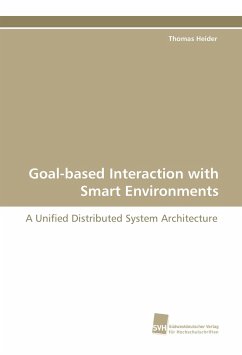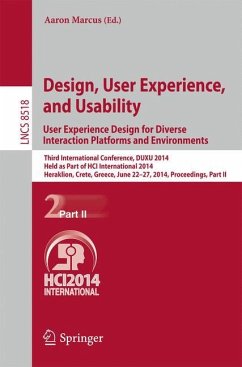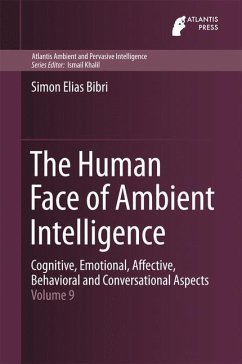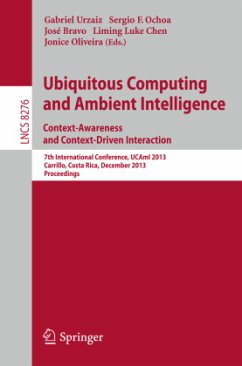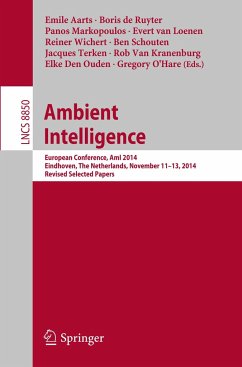
The Separated User Interface in Ambient Computing Environments
Design, Infrastructure and Tools for the Development of Remote User Interfaces in Interactive Environments
Versandkostenfrei!
Versandfertig in 6-10 Tagen
59,99 €
inkl. MwSt.

PAYBACK Punkte
30 °P sammeln!
The use of input devices adopted from desktop computing is not feasible for interacting with complex services surrounding the user in highly computerised environments. Powerful mobile computers and high speed wireless networking enable enhanced interaction in a world of ambient services, e.g. by employing a mobile phone, using gestures, or observing body movements. The arising heterogeneity of hardware, software and communication technology combined with an open set of interaction styles narrow the compatibility of the user interface and the service to control. A common understanding of a solu...
The use of input devices adopted from desktop computing is not feasible for interacting with complex services surrounding the user in highly computerised environments. Powerful mobile computers and high speed wireless networking enable enhanced interaction in a world of ambient services, e.g. by employing a mobile phone, using gestures, or observing body movements. The arising heterogeneity of hardware, software and communication technology combined with an open set of interaction styles narrow the compatibility of the user interface and the service to control. A common understanding of a solution and a detailed description of the components and their relationships facilitate interoperability. Available patterns for software architectures are rather unspecific, in particular with respect to addressing the physical distribution of components. The thesis extends the approach of separating the user interface from the application logic by defining virtual or logical input devices physically separated from the services to control. The achievement of uniformity of the design together with tools and auto-generation of source code are beneficial to the development in independent teams.



